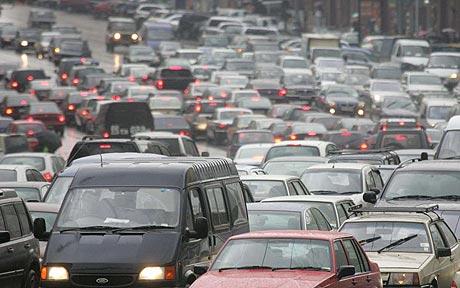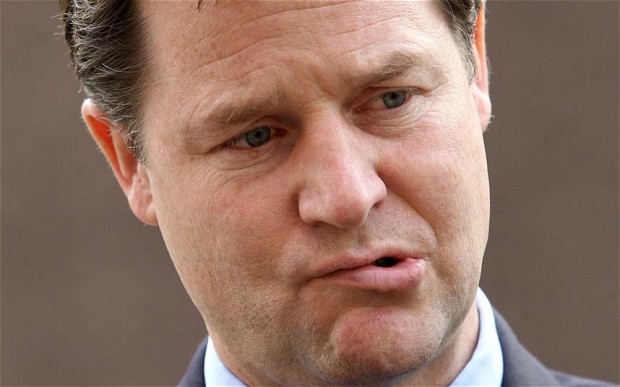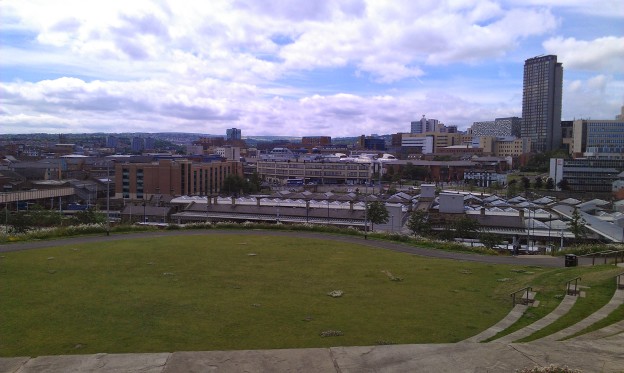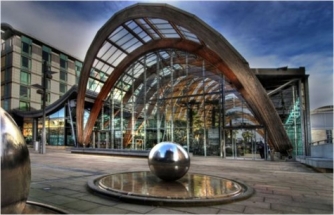
Winter Gardens, Sheffield
Spread across the UK, our major civic leaders across our cities all say one thing. Voting to leave the European Union will have a harmful affect on our cities, particularly outside of London & the South East. Sir Howard Bernstein and Sir Richard Leese in Manchester, Mayor Joe Anderson of Liverpool to John Clancy, Leader of Birmingham City Council all argue our great cities are better off in Europe.
Former Prime Minister Gordon Brown has come out today and declared leaving the EU will result in “serious economic decline” for our regional cities. Whilst also opting for some political point scoring he is right in that, “European money is necessary for renovation, renewal and regeneration – and right across the north, Scotland and Wales it is still vitally needed now.”
Evidence in the UK suggests we aren’t particularly strong when it comes to the fair distribution of funding to support regeneration, infrastructure, culture or skills across the country. (I would argue it’s this that has also given aided the rise of UKIP as areas are feel forgotten about and left behind in the first place – particularly as the UK tends to be coy about advertising where EU funding has been spent…)
Let’s talk transport. It’s widely known that London mops up transport spending in the UK. Spend is £2,700 per head in the capital compared to £134 in the North West and just £5 in the North East according to IPPR North. It’s hard to imagine schemes like the Manchester Metrolink expansion (~£500m of EU funding) would go ahead if it was subject just to the Department for Transports cost benefit methodology of ranking transport infrastructure projects. This is thought to be worth £200m each year to the Greater Manchester economy.
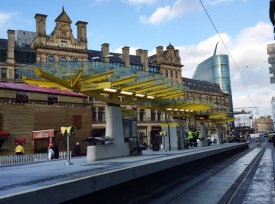
Exchange Square Metrolink Station, Manchester
EU funding also made Birmingham’s inner ring road possible. Both have considerably improved links around their respective cities, opening up development and employment opportunities.
How about Culture and Arts? Again, there is a huge gap in Government funding between the South East and the rest of the regions. According to the Department for Culture, Media and Sport Select Committee spending in the SE was £165 per head but reduced to £47 per head in the regions on average. The obvious example of EU benefit here is Liverpool’s stint as the European City of Culture in 2008. The celebration increased tourism into the city by 35% and generated approximately £753m for the local economy.
Of course, it isn’t all about London vs the rest. London itself benefits considerably from the EU but EU funding has helped redistribute access to funding more fairly across the UK. Particularly in post-industrial areas such as South Yorkshire and Cornwall, where industries were decimated due to globalisation and government policy.
Therefore the development of skills is essential. Each year 500,000 people across the EU study aboard, in a variety of locations and in different vocations. Being able to access this skills base by being in the EU creates skilled worker migration, improves innovation, productivity and intercultural understanding across and between big cities.
As always, I’ll look close to home at partly or completely EU funded regeneration, transportation, flood protection and enterprise projects here in Sheffield for instance:
- The Heart of the City Programme, Peace Gardens & Tudor Square redevelopment
- Sheffield City Hall & The Crucible refurbishment
- Grey to Green Flood Scheme at West Bar
- Sheaf Square and the refurbishment of Sheffield Midland station
- Advanced Manufacturing Park at Catcliffe and link road improvements
- Fox Valley Retail Scheme
The key question is would this level of funding be replicated or enhanced for cities outside of London if the UK Government held the purse strings? The Leave campaign continually argue that EU funding is just recycled money – to which we could remove the middle man and decide where it is to be invested directly. Of course, it could be but evidence continually points strongly toward ‘No’ as we remain the most centralised country in Europe. Our cities would undoubtedly be economically and culturally weaker as a result.
Sheffield Winter Gardens Photo Credit: https://www.goskyride.com/assets/asset-library/images/2677_w475_b.jpg
Exchange Square, Manchester Metrolink Photo Credit: http://www.metrolink.co.uk/PublishingImages/Exchange%20Square%20web.jpg






